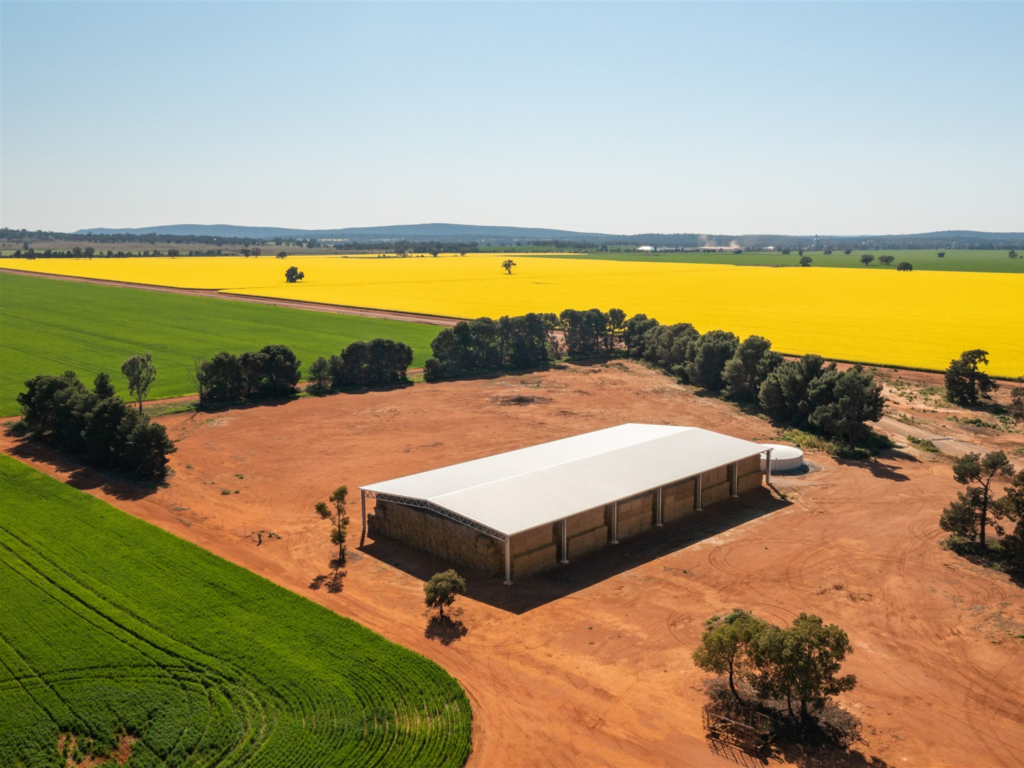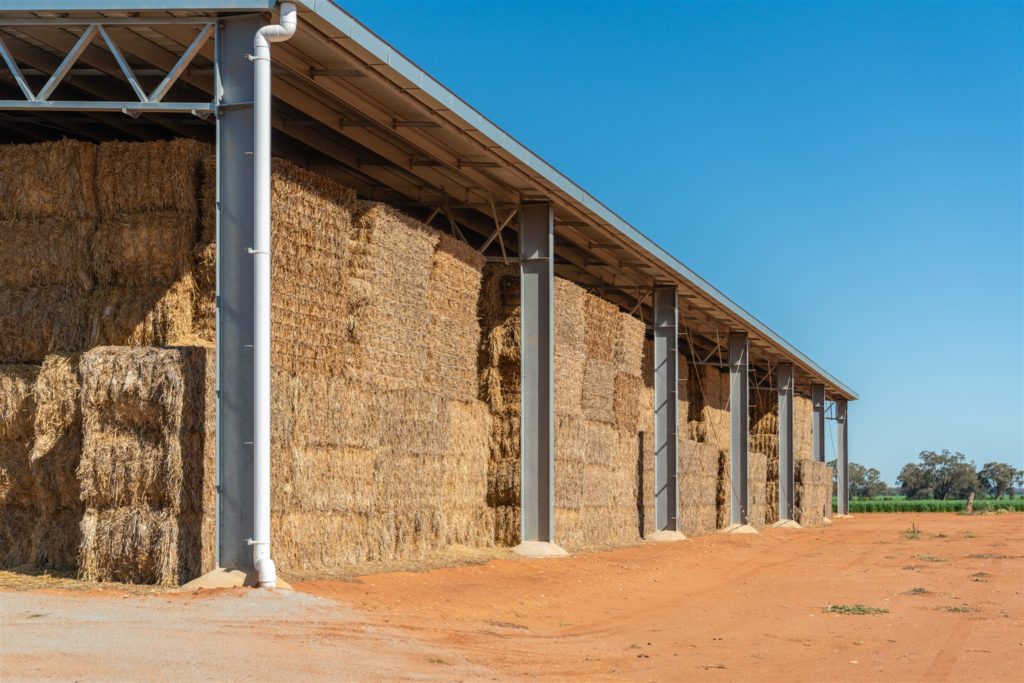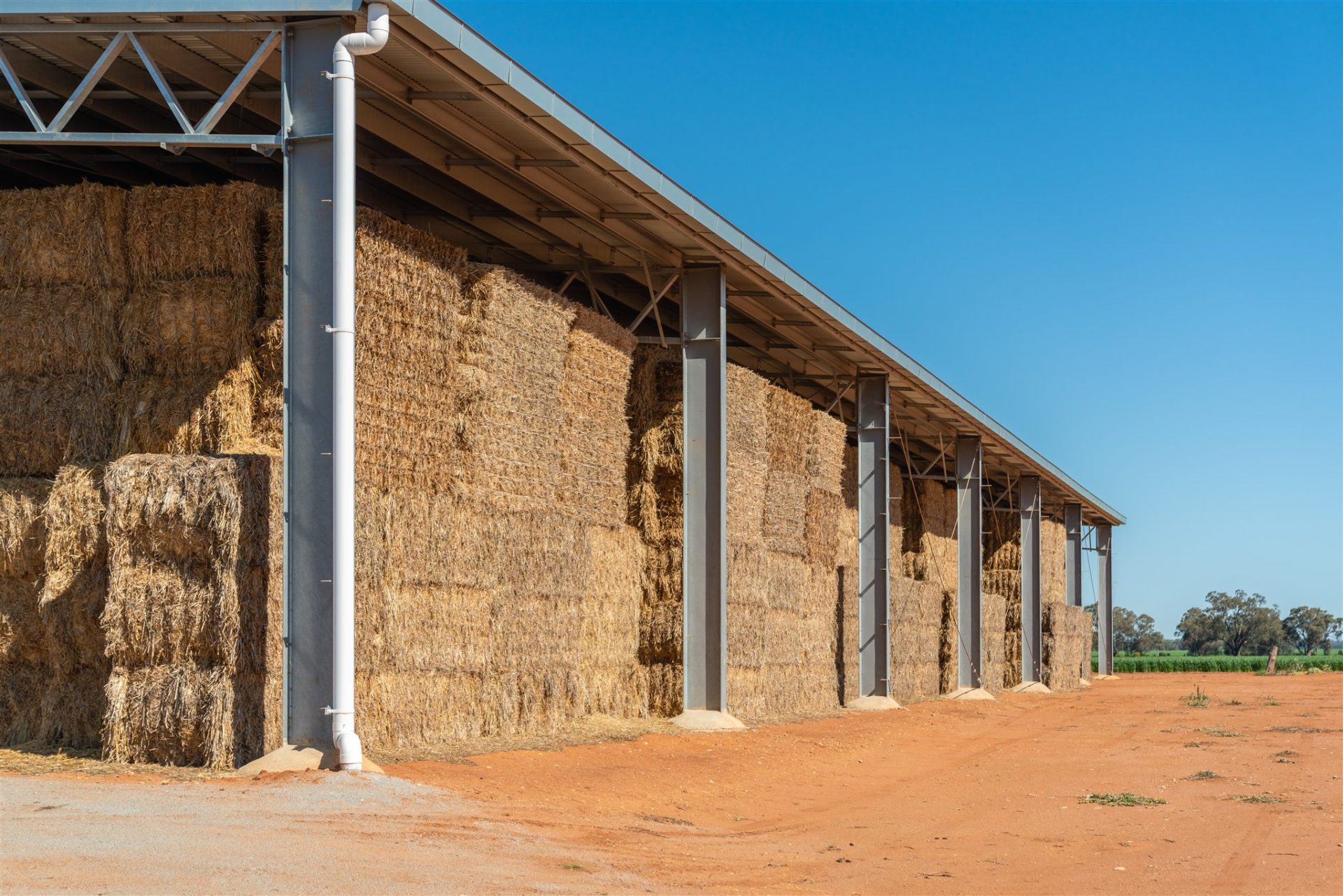The weather can affect hay in a variety of ways, from leaching and mould growth to heat damage. Here are some of the ways that the weather can affect hay.
Rain
- Leaching occurs when water soluble components of cells leak out including carbohydrates, proteins and certain minerals as rainwater moves through cut hay. Most of these are easily digestible and beneficial to livestock meaning the quality and digestibility of the hay is lowered.
- Rain can cause the restarting and continuation of plant respiration due to the re-wetting of hay above 30-40% moisture. This leads to loss of soluble carbohydrates, dry matter and overall energy content.

- Mould growth can also occur making hay less palatable for animals and in some cases creating mycotoxins. Mould has varying repercussions for different animals.
- Rain can pack hay so that it doesn’t dry properly.
- Heat damage can occur when wet hay is baled. This enzymatic browning is caused by the microorganisms in the hay using plant sugars and oxygen, generating heat.
- Higher concentration of certain nutrients in hay also occurs as a result of exposure to rain. While soluble carbohydrates, minerals and vitamins i.e. Vitamin A are leached from the hay, crude protein concentration tends to remain constant and acid detergent fibre and neutral detergent fibre concentration increases.
Other ways the weather affects hay
- The rate at which hay dries can depend on various factors including the amount of sunshine, humidity levels, wind speed, dews and moist soil. Humidity, for example, limits the ability of the air to absorb water, therefore, decreasing the amount it removes from the hay, lengthening the drying process.
- If there is excessive sunlight, the colour will be bleached from hay and Vitamin A lost, but on the other hand if dried too slowly the hay will ferment and lose nutrients.
- Wind, while needed in the drying process, can pose a problem as it can lead to loss of hay if hay is not adequately stored or protected from the elements.








